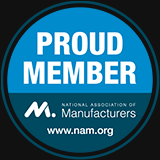

The 2018 Times Higher Education World University Rankings have been announced and it’s started a conversation about the rise in quality of education in China. Four years ago, only 2 universities made the cut for the top 200 universities, Peking University and Tsinghua University, both in Beijing. This year, 7 schools from the country made the top 200 list, making China the joint sixth most represented nation with Peking and Tsinghua University breaking into the top 30.
How Universities Are Ranked
The Times Higher Education World University Rankings uses thirteen performance indicators to provide a comprehensive and genuine analysis free from bias that students, professors, and beyond can rely on to be accurate. These indictors coincide with the organizations core mission of teaching, research, knowledge transfer, and international outlook. They then standardize the scores, as the data is fundamentally different, to get the final score.
China’s Universities Propel Forward
This surge in ranking for Chinese Universities is most likely due to the Chinese Communist Party investing billions into their science and technology research universities. Last year, party officials stated they wanted to see 6 universities rank Top 15 by 2030. The large investments may have attracted an increasing number of students from abroad in China in addition to the growing number of degree programs.
"Our rankings show that the Asian giant's higher education improvement is real and growing. With two top-30 representatives for the first time in the thirteen-year history of the rankings, China's leading universities are truly now part of the global elite and overtaking prestigious universities in the US, UK, and Europe," said Phil Baty, editorial director of the rankings from Times Higher Education.
However, this investment goes beyond the education sector and serves as a geopolitical indicator of whether the investments are making a difference. One significant problem currently faces is a shrinking workforce population after the participation rate began to decline in 2010. This large investment into education has the power to not only keep scholars in the country, put propel China's workforce to the top.
Additionally, the influx of billions of dollars and resources has improved ratings and increased the chances of Chinese students staying in the country for their education. Wang Feng, a professor of sociology at the University of California, Irvine, says the stunt in growth may translate to a long-term win. The increased emphasis on education could shift the labor market with adults entering the workforce later, but with more knowledge that translates to higher productivity.
"Chinese universities are doing outstanding work in science, technology, mathematics, [and] life sciences," Baty said adding, "I think arts and humanity subjects are very important to create [a] balance and to provide the creativity needed to push research to the next level."
The Ministry of Human Resources and Social Security presented data that shows that skilled workers account for only about 19% of China's entire workforce, with the highly skilled worker population making up 5%. As the industrial structure shifts to a more skilled labor force, this rise in education is good news for those interested in expanding into the Chinese market.
Vice-Premier Ma Kai spoke on the matter in December of 2016 during a symposium on highly skilled talents by stating that skilled workers are the energy that vitalizes technological improvement, economic growth, and social progress. As skilled workers begin flooding the workforce, companies in China benefit from gaining knowledgeable employees while energizing the economy.
Chinese Universities and Toolots
Toolots Inc., a Southern California based online marketplace and distribution channel for the latest high quality industrial equipment, machinery, and technology, has a close relationship with major Chinese manufacturers and a passion for bringing the global manufacturing community together. In fact, fifteen founding shareholders of Toolots are graduates of China’s two highest ranked universities, Peking University and Tsinghua University. Since its formation in May of 2016, Toolots' primary goal has been to streamline industrial commerce between the US and China to promote economic growth and build lasting relationships between manufacturers, universities, and the Toolots platform.
The company's commitment to achieving this goal can be seen in their annual trade summit focusing on facilitating educational and networking opportunities specifically between the US and China. This year, Toolots' Second Annual Manufacturing Exchange Summit will take place from November 12-14, 2017 in Yuyao, China with the aim to bolster relationships between the American industrial and technology communities and the Chinese manufacturing market. Featuring industry experts, investors, trade associates, and government officials, this is an opportunity to enrich U.S. manufacturers with invaluable industry knowledge and introduce them to contacts that could help get their products to market. If you're interested in learning more, contact Toolots' Public Affairs Department at summit@toolots.com or at (844)-866-5687.






